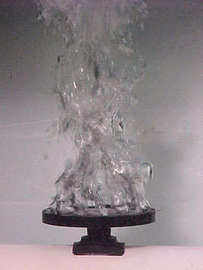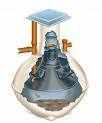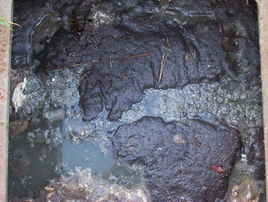Extended Aeration Sewage Treatment Explained
Extended Aeration Sewage Treatment
Extended Aeration sewage treatment plantsThese don't need a Primary Settlement Tank. The raw sewage flows directly into the aerobic digestion chamber where all the solids are digested by aerobic bacteria. This is possible because the sewage is aerated for a minimum of 24 hours, giving vastly increased time for almost complete digestion of all the solids, not just those in suspension. Because of this, they can go up to 2 years between emptyings. Extended aeration process plants cannot deal with long periods of absence and are not a suitable choice for holiday homes. This is because the process is a 'feast and famine' principle. There is no primary settlement tank to act as the 'larder' and store organic material for later use. If an extended aeration treatment plant is left unfed for more than 2 weeks, you risk serious bacterial death and it takes 8 to 10 weeks to re-establish a working bacterial colony again. Extended aeration plants do not work well if they are underloaded and should not be chosen if the number of people using them is less than 40% of their design size, eg. a 6 person should have a minimum of 3 people actually using the system. This used to be a fact that was emphasised by the original UK manufacturers, but seems to have been ignored as more and more manufacturers have adopted the design. We service hundreds of extended aeration plants and can verify that underloaded plants have difficulty in meeting their Environment Agency consent standards. An Extended Aeration Sewage Treatment Plant should be chosen ONLY if the sewage is domestic residential in origin, the property is lived in all the time and the number of people living there is a minimum of 40% of the plant size. If the above criteria are not met, consider 3 stage sewage treatment systems or non-electric sewage plants instead. |  |
Septic Tanks
These are not extended aeration sewage systems, in fact, no air is introduced into the sewage at all. The digestion is anaerobic and the resulting septic effluent is exactly that - SEPTIC. See septic tank sewage systems
 ank effluent has a very high Biological Oxygen Demand (BOD) and strips oxygen out of anything it touches, be that in watercourses or the soil, leaving an environment which cannot sustain animal life. Even worms breathe oxygen through their skins, so installing a septic tank soakaway system under your lawn ensures a sterile, dead garden with resulting drainage problems.
ank effluent has a very high Biological Oxygen Demand (BOD) and strips oxygen out of anything it touches, be that in watercourses or the soil, leaving an environment which cannot sustain animal life. Even worms breathe oxygen through their skins, so installing a septic tank soakaway system under your lawn ensures a sterile, dead garden with resulting drainage problems.| Primary Settlement Tanks are not odourless unless they are vented properly - a design fact often missed by many manufacturers and architects. All private sewage treatment systems should have at least one Soil Vent Pipe (SVP) fitted on the drain run. This is a pipe that usually runs up the side of the house wall, either inside or outside the house and finishes above the roof eaves line. The SVP is also called a 'stench pipe' for very good reasons as it carries the smell of the drains and primary tank to a place where it does not cause any problems. However, many architects use Durgo or Air admittance Valves instead of SVP's as they are less visually intrusive. These only allow air INTO the drain system, but do not allow the smell out of it. The smell has nowhere to go but out through the tank lids or through the plugholes in the sinks, showers and baths in the house. We have calls every day from people who are driven demented by drain and sewage smells in their houses. Always insist on a properly fitted SVP in your house design if you have a sewage treatment plant or septic tank. |  |
